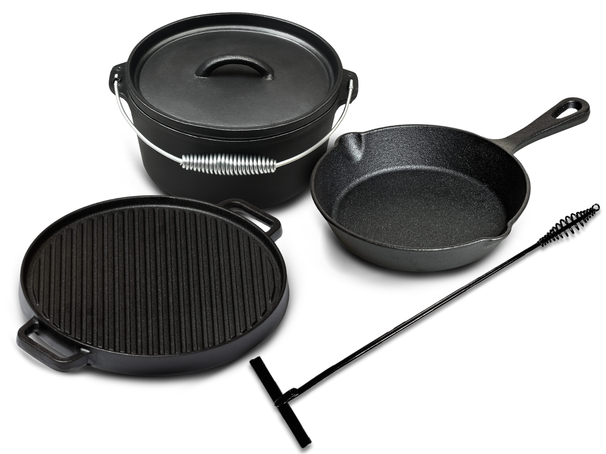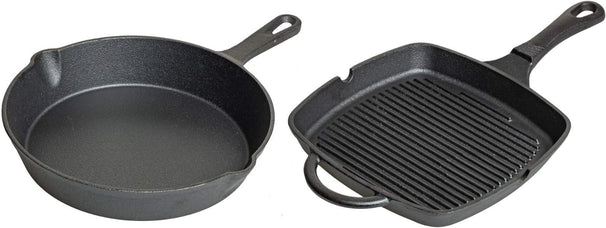PFAS Free pans (also known as Teflon free pan)

Why are PFAS-free pans important?

Health risks & sustainability

Versatility & environmentally friendly

Cast iron pans

Stainless steel pans

Ceramic pans

Related howto's
Related products

Blackwell Dutch Oven BBQ set Cast Iron - Casserole + Lifter, Frying Pan ø 20 cm & Grill Plate ø 30 cm - 4 Pieces
In stock

Blackwell Dutch Oven BBQ set Cast Iron - Casserole + Lifter, Frying Pan ø 20 cm & Sauce Pan 18 cm - 4 Pieces
Out of stock
£141.00

Blackwell Cookware Set Cast Iron - Grill Pan 23 x 23 cm, Frying Pan ø 25 cm & Wok ø 32 cm - 3 Pieces
In stock
-26%
discount set

Blackwell Cookware Set Cast Iron - Frying Pan ø 25 cm & Grill Pan 23 x 23 cm - without non-stick coating 2-piece
In stock

Cookinglife Steamer Cooking ø 20 cm 3-Piece
In stock

Cookinglife Cookware Set Stay Cool (Cooking Pots, Saucepan) + Lids - 7 pieces
In stock
-24%
discount set

Cookinglife Cookware Set Stainless Steel / Black 4-Piece
In stock

Demeyere - 4 piece Cookware set (Cooking pot ø 16 / 18 / 20 cm + sauce pan ø 16 cm) + Lids Atlantis 7 - stainless steel
In stock
-12%
discount set



